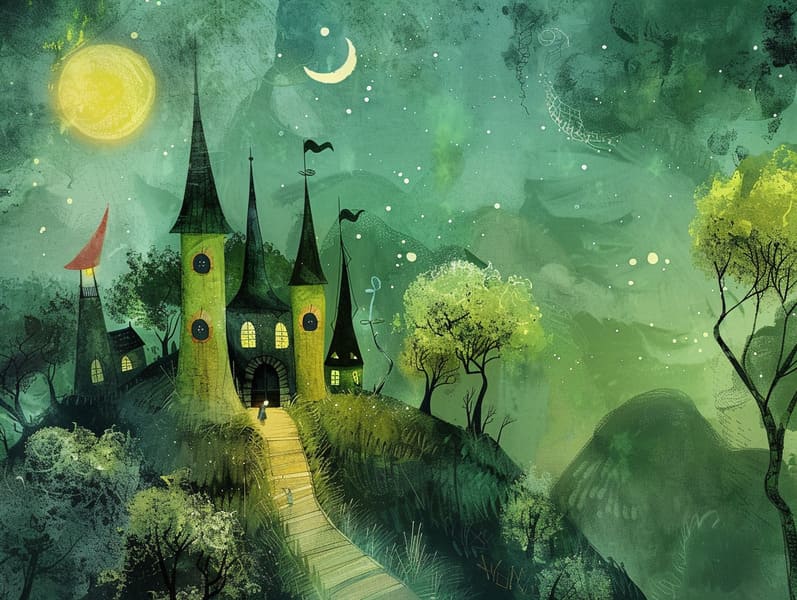The Rise of Vintage Fairy Tales with Their Consistent Spell.
The Rise of Vintage Fairy Tales with Their Consistent Spell.
Blog Article

Best fairy tales have timeless appeal. These narratives have been narrated from one generation to the next centuries before they were ever put on paper. They sprang from a variety of backgrounds, including African traditions. They were initially shared among adults, often carrying themes and messages aligned with the societal norms and beliefs of the time.
The renowned Brothers Grimm, Jacob and Wilhelm, were among the first to collect many of these beloved tales. Their compilation, "Grimm's Children's Stories," included tales like "The Story of Cinderella," "The Story of Hansel and Gretel," and "Schneewittchen," which have since become essentials in the world of children's fairy tales. Similarly, H. C. Andersen's fantastical tales, such as "The Sea Maid," and "The Duckling that Could," have stolen hearts worldwide, cementing their place in the pantheon of treasured fairy tales.
Despite their ancient origins, these stories remain as pertinent as ever, especially as children's bedtime stories. These charming stories are now available in different formats, including richly illustrated books, captivating animations, and digital fairy tales.
Their lasting appeal can be ascribed to several enchanting factors:
Life Lessons: Timeless fairy tales often whisper important moral lessons. Narratives like "The Boy Who Cried Wolf" teach the benefit of integrity, while "The Tortoise and the Hare" underline the traits of determination and meekness. These tales offer young readers clear distinctions between good and bad, forming their moral compass in a mild yet deep way.
Kindness and Comprehension: Fairy tales frequently showcase characters facing obstacles and hardships, provoking young listeners to empathize with their struggles and support their triumphs. For instance, "Beauty and Her Beast" conveys the necessity of looking past the exterior to recognize the real character of a soul, fostering warmth and appreciation.
Cultural Comprehension: Many ancient fairy tales are deeply embedded in the cultural contexts from which they bloomed. Exploring these narratives can provide delightful insights into different ways of life, advancing a sense of global understanding and comprehension.
Inventiveness and Fantasy: The mythical elements in fairy tales—wizardry and magic—provoke children’s creativity. These narratives move readers to fantasy realms, enhancing innovative dreams and a sense of delight that endures a lifetime.
Traditional fairy tales are not only fantastical but also illuminating. They act as magical tools in fostering various mental and emotional abilities in young readers. When traditional fairy tales are recited, they promote language skills by bringing new language and sophisticated sentence structures. This practice also fosters auditory perception and attentiveness, as little ones listen intently, expectant to see what happens next.
Furthermore, reflecting on the themes and characters of traditional fairy tales can foster problem-solving abilities and thinking skills. Kids learn to identify patterns, make predictions, and figure out cause and effect. These analyses also support children utter their thoughts and feelings, promoting their emotional intelligence.
In today’s technological age, the abundance of online storybooks has made these fairy tales more attainable than ever. Web-based platforms and software make available large libraries of famous fairy tales that can be seen or listened to anytime, anywhere. Fairy tales read aloud are particularly liked, supplying an engaging way for the young to take part in these charming tales. Spoken stories and read-to-me stories carry characters and settings to life, often supported by captivating audio effects and music that intensify the tale experience.
The everlasting appeal of ancient fairy tales lies in their ability to adapt to current eras while preserving their central values. Contemporary takes of these tales often incorporate more multicultural protagonists and modern settings, making them understandable to today’s audience. However, the main ideas of braveness, kindness, and fair play remain unchanged, continuing to touch children of all ages.
Ancient fairy tales also offer a sense of assurance and comprehensibility. They present a methodical narrative with a distinct beginning, middle, and end, often ending with the ending of conflicts and the triumph of rightness over wrongness. This assuredness can be encouraging for the young, extending a sense of unwaveringness in an fluctuating world.
Timeless fairy tales continue to entrance and edify new generations, maintaining their mystique and importance in modern society. As children's night stories, they introduce a perfect blend of captivation and insight, boosting more info moral values, empathy, and creativity. The proliferation of online fairy tales and the likability of fairy tales spoken affirm that these ancient fairy tales remain reachable to new generations.
By maintaining and relating these stories, we continue to laud the rich tapestry of tradition and cultural heritage. Whether you are discovering a gorgeously illustrated book, experiencing a online library, or listening on an read-aloud story, the wonder of ancient fairy tales is always within reach. These tales convey of the continued power of fairy tales and its ability to join us across centuries and lands.
No matter if you are browsing a beautifully illustrated book, delving into a online collection, or hearing an audiobook, the radiance of bedtime fairy tales is always within reach.
These tales convey of the continued presence of tales and its ability to draw us together across generations and cultures, forming a connection that captivates and teaches alike.